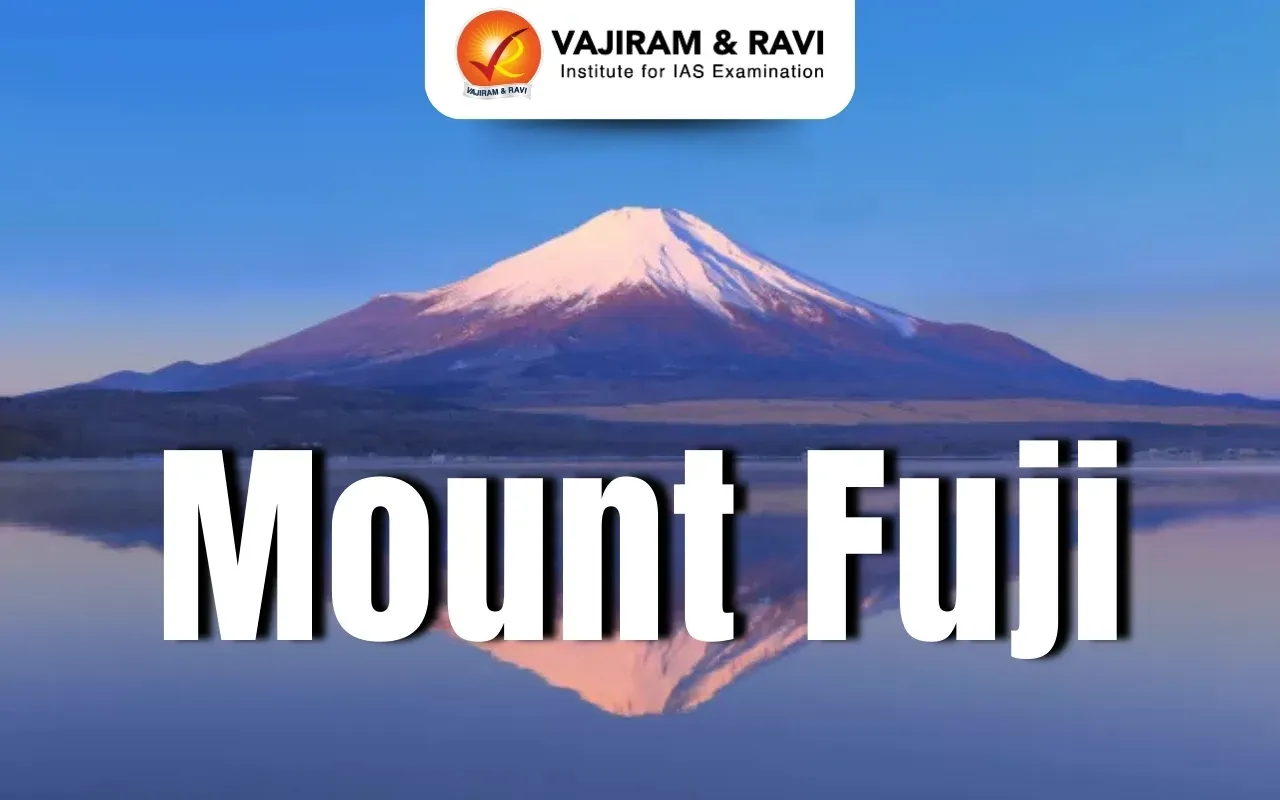Mount Fuji Latest News
The Japanese government recently released a video created by artificial intelligence (AI) to illustrate what would happen if Mount Fuji were to erupt.
About Mount Fuji
- Mount Fuji, also called Fuji-san, is Japan’s tallest mountain, with a height of 3,776 meters.
- It is situated close to the Pacific coast in the Yamanashi and Shizuoka prefectures in the heart of the large island of Honshu.
- Tokyo, Japan’s capital, lies 60 miles (100 kilometers) to the east.
- It is an active stratovolcano, which last erupted from 1707 to 1708.
- It is part of the Fuji Volcanic Zone.
- The mountain is considered the world’s 7th highest mountain peak of an island and Asia’s 2nd highest volcano that is situated on an island.
- Mount Fuji is one of Japan’s “Three Holy Mountains” along with Mount Tate and Mount Haku.
- The mountain is the major feature of Fuji-Hakone-Izu National Park (1936), and it is at the centre of a UNESCO World Heritage site designated in 2013.
- The age of Fuji is disputed, but it seems to have formed during the past 2.6 million years on a base dating from up to 65 million years ago; the first eruptions and the first peaks probably occurred sometime after 700,000 years ago.
- The earliest precursors to Mount Fuji were Komitake (which forms the mountain’s north slope) and Ashitaka-yama (which sits southeast of the mountain).
Source: NDTV
Last updated on December, 2025
→ Check out the latest UPSC Syllabus 2026 here.
→ Join Vajiram & Ravi’s Interview Guidance Programme for expert help to crack your final UPSC stage.
→ UPSC Mains Result 2025 is now out.
→ UPSC Notification 2026 is scheduled to be released on January 14, 2026.
→ UPSC Calendar 2026 is released on 15th May, 2025.
→ The UPSC Vacancy 2025 were released 1129, out of which 979 were for UPSC CSE and remaining 150 are for UPSC IFoS.
→ UPSC Prelims 2026 will be conducted on 24th May, 2026 & UPSC Mains 2026 will be conducted on 21st August 2026.
→ The UPSC Selection Process is of 3 stages-Prelims, Mains and Interview.
→ UPSC Result 2024 is released with latest UPSC Marksheet 2024. Check Now!
→ UPSC Prelims Result 2025 is out now for the CSE held on 25 May 2025.
→ UPSC Toppers List 2024 is released now. Shakti Dubey is UPSC AIR 1 2024 Topper.
→ UPSC Prelims Question Paper 2025 and Unofficial Prelims Answer Key 2025 are available now.
→ UPSC Mains Question Paper 2025 is out for Essay, GS 1, 2, 3 & GS 4.
→ UPSC Mains Indian Language Question Paper 2025 is now out.
→ UPSC Mains Optional Question Paper 2025 is now out.
→ Also check Best IAS Coaching in Delhi
Mount Fuji FAQs
Q1. Mount Fuji is located in which country?+
Q2. Mount Fuji is classified as which type of volcano?+
Q3. Mount Fuji is the major feature of which national park?+
Q4. What is the height of Mount Fuji, the tallest mountain in Japan?+
Tags: mount fuji prelims pointers upsc prelims current affairs

















